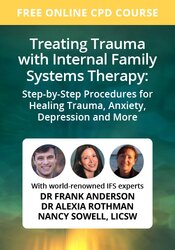Enrol in an online course today for flexible, self-paced learning—no fixed schedule required. Plus, enjoy lifetime access to course materials for convenient revisiting.
Therapy and Yoga (1/5): Bringing a Yoga-Lens to ‘Talk Therapy’

Perhaps, 10 or 20 years ago, psychologists and ‘talk-therapists’ could have a caseload without a client mentioning yoga. Now, and especially in urban areas, it is highly unlikely that we won’t at some point see a client who has a yoga practice or at least a client who is thinking about attending a class. We may ourselves have some direct experience of yoga – whether it is just one part of our therapist ‘self-care package’ or a fundamental aspect of our philosophy. At the very least, therapists are likely to be curious about yoga’s ever-growing popularity.
Despite the work of Bessel van der Kolk in highlighting the role of yoga in trauma therapy, in my experience there is still a great deal of unconscious bias around yoga within the therapy profession. On the other hand, a blanket assumption that yoga-equals-wellbeing can blind us to the mental health risks and contraindications associated with yoga.
I first began practicing yoga in my early 20s, following the 9/11 attacks. I had stared, frozen, out of my office window in NYC as the landmarks disappeared before my eyes. My body developed a constant internal tremble and I began getting triggered by every siren, every plane, every clear blue sky. I had nightmares and struggled to sit still or read a book. My usual survival techniques, alcohol and distraction, were no longer working.
I started therapy and, simultaneously, made a rare plea to my mother for help. She had been doing a daily yoga and meditation practice for almost 20 years, a vital part of her epic journey surviving anorexia. Carefully, she wrote it out on the pages of a small journal, with tiny stick people to illustrate the movements. It culminated in a short meditation at the end to settle the mind and body.
I had been resistant and judgmental of my mother’s staunch commitment to her daily yoga practice. But being desperate, I was willing to try anything. After a few weeks of this combination of therapy and yoga the flutter in my core had begun to settle.
By the mid 2000s I was teaching yoga full time and becoming increasingly interested in the neurobiological and physiological effects. When I first studied yoga and meditation we were instructed to say, “the yogi’s believe that meditation can regulate the nervous system.” By the time I did my Masters, the research had arrived.
I went on to train as a Counselling Psychologist. But just as we cannot separate the body and the mind, I cannot separate the ‘yoga me’ from the ‘therapist me’. One could not exist without the other.
In this series, I plan to explore what yoga is (and isn’t) and why it is utterly intertwined with psychology. In parts 2 and 3, I will give an overview of yoga and why it belongs with psychology, including the resonances between concepts such as resistance and defences, integration, and what the mind actually is. Part 4 will share key clinical pointers for all talk therapists, while part 5 will focus on how yoga practice can contribute to the skills and qualities of a therapist.
My aim is to help therapists increase their knowledge of yoga, so that:
- Clients with a yoga practice feel more understood in therapy.
- Clients who begin engaging in yoga can be supported to make the right choices, be aware of contraindications and pitfalls, and process any ‘reactions’.
- Therapists can consider whether having a yoga practice themselves could help hone their therapeutic skills.
There are also many things I won’t be doing in this series:
- I won’t be promoting yoga or campaigning for clients or practitioners to become yoga students.
- I’m not going to provide an in-depth history of yoga – those who are interested can find an excellent history here.
- I will not be defining or comparing different schools or styles of yoga – although in part 2 I will give an overview of the branches and types commonly offered.
- I will also not be discussing the benefits of exercise or the virtues of mindfulness – the research is available and conclusive.

















